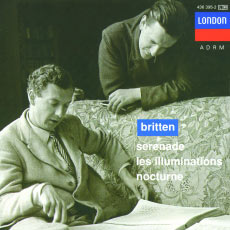A lovelorn youth, perhaps with a guitar, but certainly with a song in his heart. A balcony. A fervent wish to entice the object of his desire from her boudoir, however briefly. That’s the archetype of the serenade, and it’s one that translated to the opera stage most famously in Don Giovanni, as the luckless libertine attempts his seduction of Elvira’s maid.
The nocturnal implications of the term gave rise in the late 16th century to the serenata, a sort of solo cantata sung outside by artificial light, but also transferred in the 17th century to the instrumental sphere, originally signifying a musical greeting performed in the open air at evening-time. By the 18th century it had become a catch-all term for a piece in one or more movements, usually of a light character. Serenades came after divertimentos and before notturnos – their place in the evening’s entertainment was at about 9pm, while the nocturne was heard at 11.
Such timetabling was only loosely adhered to, of course, and the term migrated from works with plucked accompaniments – mimicking the serenader’s guitar, as does Schubert’s famous example, Ständchen, from Schwanengesang – to multi-movement works combining aspects of march, symphony and concerto. Mozart contributed generously to the Salzburg tradition, joining his father and their colleague Michael Haydn in composing a collection of such works for particular events or noble families. He continued in his Viennese maturity to compose a series of richly scored woodwind treats, the greatest of which is the Gran Partita for no fewer than 12 wind players and double bass. Later works include the strings-only Eine kleine Nachtmusik.
In the 19th century the serenade moved indoors and came to signify, most usually, an orchestral work that did not aspire to the loftiness of the symphony. Brahms’s two serenades enabled him to stretch his orchestral muscles without engaging with the Beethovenian example that so intimidated him. Strings-only serenades flowed from the likes of Dvorák, Suk, Tchaikovsky and Elgar, while Dvorák and the young Richard Strauss composed serenades for wind ensembles.
Sibelius’s two serenades (1912-13) are for violin and orchestra, an example followed by Leonard Bernstein in his Serenade after Plato’s Symposium (1954). Other important 20th-century serenades include one for piano by Stravinsky (1925), composed so that each of its four movements would fit on one side of a 78rpm record. Britten’s Serenade (1943) sets nocturnal poetry for tenor, with the inclusion of a virtuoso horn part composed for Dennis Brain. In perhaps the most beautiful example of all, Vaughan Williams set words from The Merchant of Venice in his Serenade to Music (1938) for 16 of the finest singers of the day.
Create a free account to keep reading




